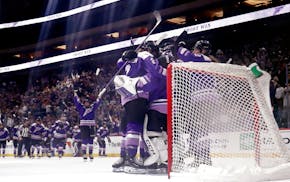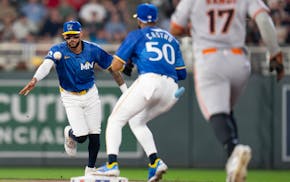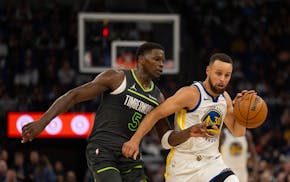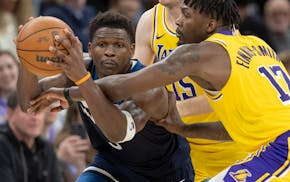FORT MYERS, FLA. - The beginning of the last day of the strangest spring training in Twins history, Rocco Baldelli gathered the team in left field at Hammond Stadium for a talk. Then, realizing fans were eavesdropping, he took the team to the adjacent practice field, and ushers asked fans to clear the area.
Usually, these kinds of meetings are held in the Twins clubhouse. In the age of COVID, Baldelli held large meetings outdoors this spring, and the team was split between clubhouses to allow for social distancing.
Such alterations to routine, and the lack of filled stands during games, were the two most obvious changes to spring training this year, at least to outsiders.
To team executives and media members, the changes felt more dramatic.
For team executives, the spring is usually spent getting to know players — especially new acquisitions and draft choices — and new staff members. For media members, a typical spring training might provide the best access in any major sport, with players available in the clubhouse, most of them in a relaxed state of mind.
I've been covering Twins spring trainings since 1993, and it's one of my favorite assignments because it is the rare place in sports where the conversations revolve around craft and personality more than daily results.
This year, reporters were not allowed in the clubhouse or on the field. Team executives said this spring was just as strange for them.
Dealing with a large group of players wearing masks, and not eating in the same room, turned what can be an ideal team-building exercise into a game of guess-who's-behind-the-mask.
"From the outset, there was a sense of elation and euphoria that we were reconnecting with a lot of people that, throughout the offseason, we were just connecting with through Zoom and Teams and things like that," Twins General Manager Thad Levine said. "I think the initial spike of emotion when we got here was a very positive one.
"As spring training has unfolded, I have come to realize that what I enjoy most about spring training is going out to dinner with the Double A-hitting coach, or the Single-A coaching staff or our medical team. Those connections, while grounded in professional conversation, are really more about connecting with people and weaving the fabric of the culture of the organization. Those, I miss dramatically."
Levine also missed inviting his father and other friends and relatives to Florida, and taking those close to him into the clubhouse.
Other team executives spoke of walking into the clubhouse, seeing unfamiliar players wearing masks, and worrying about not recognizing someone, or introducing themselves to someone they had already met. And of missing the random groupings of executives, coaches, players and staff in the dining room.
"What was strange in a good way was the day that fans showed up here," said President of Baseball Operations Derek Falvey. "For the first time in a year, I walked out of my office and saw people in the stadium — that was awesome. There wasn't silence anymore.
"The other strange part of this spring is that we're wearing these trackers that geolocate us relative to one another, so if I'm within six feet of you for more than 15 minutes, cumulatively, in a day, now you're a close contact of mine. So we all wind up doing this dance, where we move close to each other to have a conversation, then back up when we realize that we're being tracked."
In the final spring game Tuesday, the Twins and Pirates played to a 1-1 tie and stopped after seven innings.
"We were able to get through the camp in a good place health-wise," Baldelli said. "I think the enthusiasm level is very high. … It was an excellent camp. I couldn't be happier than where we're sitting right now."
By 2:15 p.m. Eastern Time, the diamond was empty, Jimmy Buffett was playing on the ballpark sound system, George Toma was dragging the infield, and the Twins were ready to leave their strangest spring behind.
Jim Souhan's podcast can be heard at TalkNorth.com. On Twitter: @SouhanStrib. jsouhan@startribune.com

Souhan: Frost's McQuigge goes to work in big playoff victory

Souhan: Twins' early struggles were unsightly but not definitive

Souhan: Pondering Ant, whose injuries are no worry but whose shooting is a large concern

Souhan: Story lines aplenty when Wolves, Warriors clash


![TC Bear signage encouraged fans to keep their masks on. Most people complied. ] JEFF WHEELER • jeff.wheeler@startribune.com](https://arc.stimg.co/startribunemedia/C4QPTZIYFQJSU7CRTNF6APICEA.jpg?w=600&h=600&auto=format%2Ccompress&cs=tinysrgb)